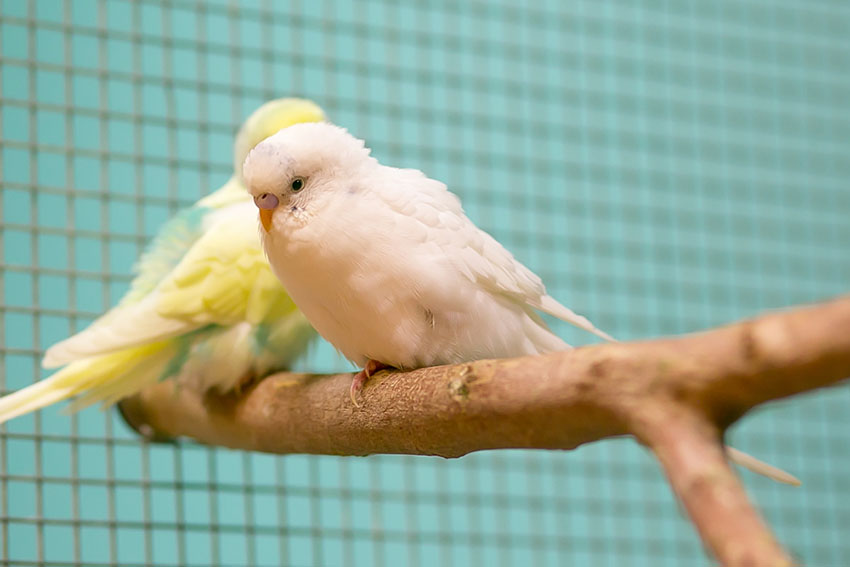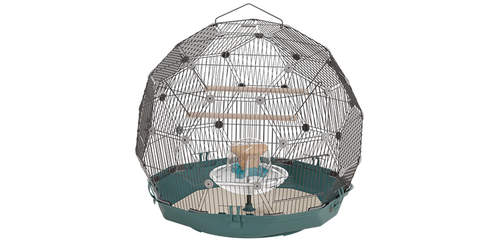Choose the right thickness of perch and it will wedge snugly between the cage bars on either side, trimmed neatly at the edges. Plastic zip-ties can be used too. To insert a perch that doesn’t span the entire cage, you’ll have to be a bit more ingenious and employ small bolts, washers and wingnuts.
Parakeet Perch Diameter
All-purpose roosting perches should be between a quarter to half an inch in diameter, to make them comfy for parakeet feet. Try to include perches of different diameters to make things more interesting for the bird. You could also construct a twisted twig perch, or a vertical "twig tree" with perches of various sizes (different diameters of dowel inserted into a block of wood, for example).

Simple stick perches are often the parakeets' favorites
Parakeet Perch Stand
If your pet parakeets free-fly indoors, they will need perches. They will perch on pretty much anything, including you, and will happily scamper around on the floor too. You can buy perch stands of all shapes and sizes, to give them something a bit more tailor-made. You could make your own parakeet perch stands too. At its most basic, the stand can be made from a bent twig embedded in a flat base; but more ambitious parakeet owners sometimes build miniature playgrounds for their birds, incorporating ladders, climbing frames and perches.
Parakeet Perch Covers
If you’re using plain wooden perches made from pine dowelling, most pet-shop literature will recommend putting covers on them. These are custom-made tubes of sandpaper which fit over the perch and give your bird’s feet a bit more grip and texture. The sales blurb will also tell you how they help keep your bird’s toenails at the right length, but this is not actually true. Like feathers, the nails of a parakeet reach the correct length and then remain at that length, unless they are snapped off, or if the bird has a disease or condition associated with excessive nail growth.
The truth is, perch covers are not necessary. They may even be a cause of a parakeet condition known as bumble foot, where the toes become swollen and sore.



Comments
Linda, 5 May 2023
Are honey suckle branches safe for parakeet perches?
Karen, 15 June 2021
Can Thuja Occidentalism Arborvitae(cypress's ear) but used for pearches
B007, 30 September 2019
Can madrone and manzanita be used for parrot perches?